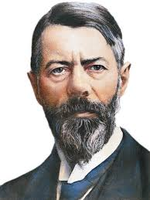Reginald de Montfort
Reginald de Montfort (1614–1710) was a political and religious figure who served as the first Magistrate of the Kasterburg Republic. Having previously held offices in the Shirithian occupied province of Batavia, he had lead the first migration of Batavians from Shireroth to the green.
Early life
Reginald de Montfort was born in the influential de Montfort family, whose members have been prominent in Batavian politics, especially in Nederburg, the later South Batavia. Reginald was the second son of Walter de Montfort, who at the time served as Lord Mayor of Essenbach, in the Gewest of Baronië. When Reginald was born, the Batavian Kingdom was collapsing, and the Treaty that would be the final attempt at Batavian unification had just been signed. Reginald's youth saw the collapse of Batavia and the annexation by both Jingdao and Shireroth. This loss of identity can explain his later life and career.
Career
- clerk - politician - author - minister - marriage
Batavian Nationalism
In this tumultuous environment, a faction arose surrounding Reginald de Montfort, a minister in the Reformed Catologian Church and author. In several pamphlets, he called for what he called "true Batavians both in the flesh and in spirit" to come together and protect their heritage. The group around de Montfort soon included several high-ranking officials within the army, as well as political figures. An important part in the group's philosophy was the inclusion of the displaced Batavian population in the green wilderness that were the lands of former Minarboria. De Montfort visited the cities of Feldkirche and Kasterburg, once cultural centres of the Batavian kingdom, and was impressed with the determination of its few remaining citizens, describing them as "the ones who not only truly understood, but encapsulated in their lives, the essence of the Batavian spirit". The harsh conditions of the land strongly suited de Montfort's stoic and determinist philosophy and he began to use these encounters in speeches and publications to expouse his views, which were shared by many of his listeners.
